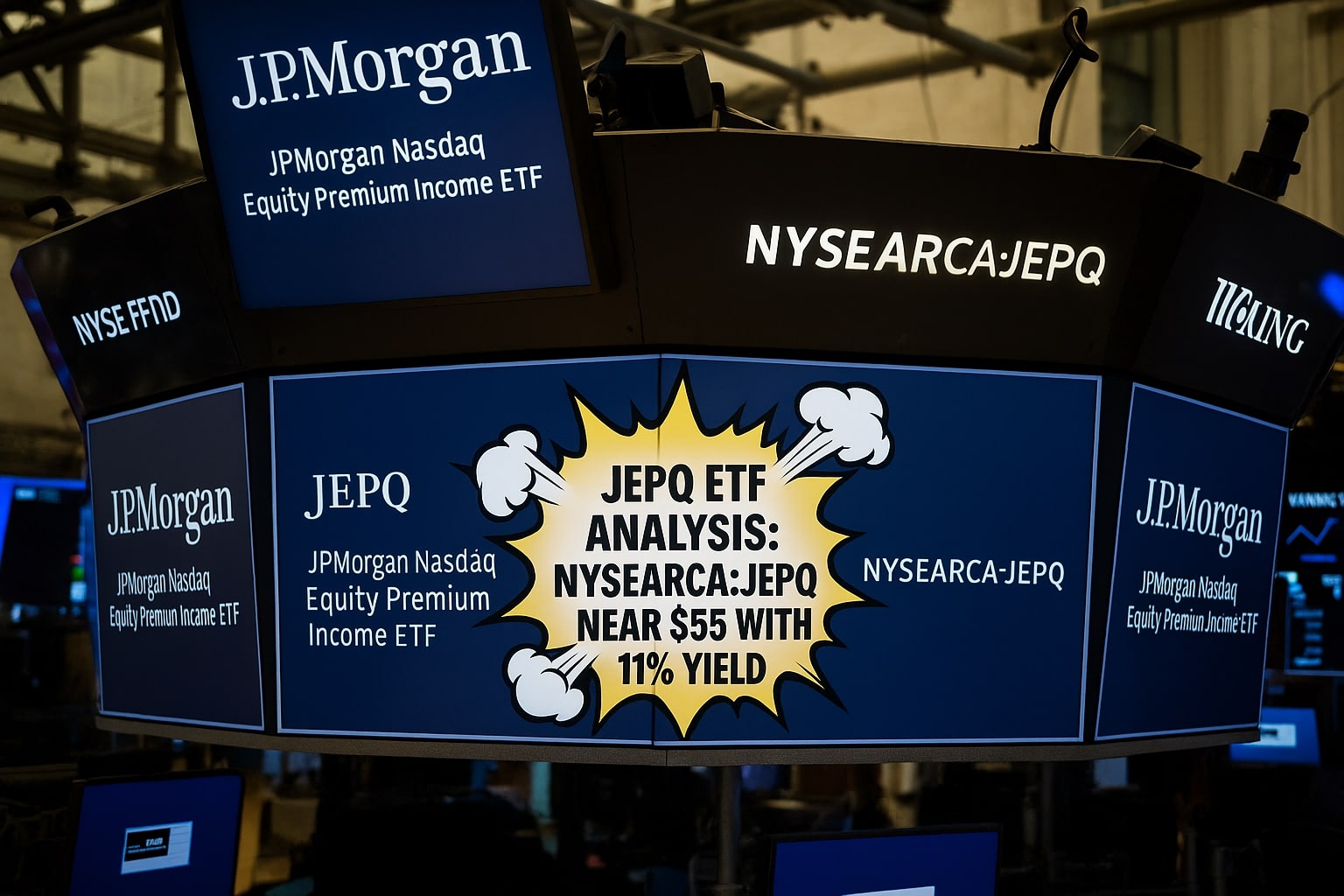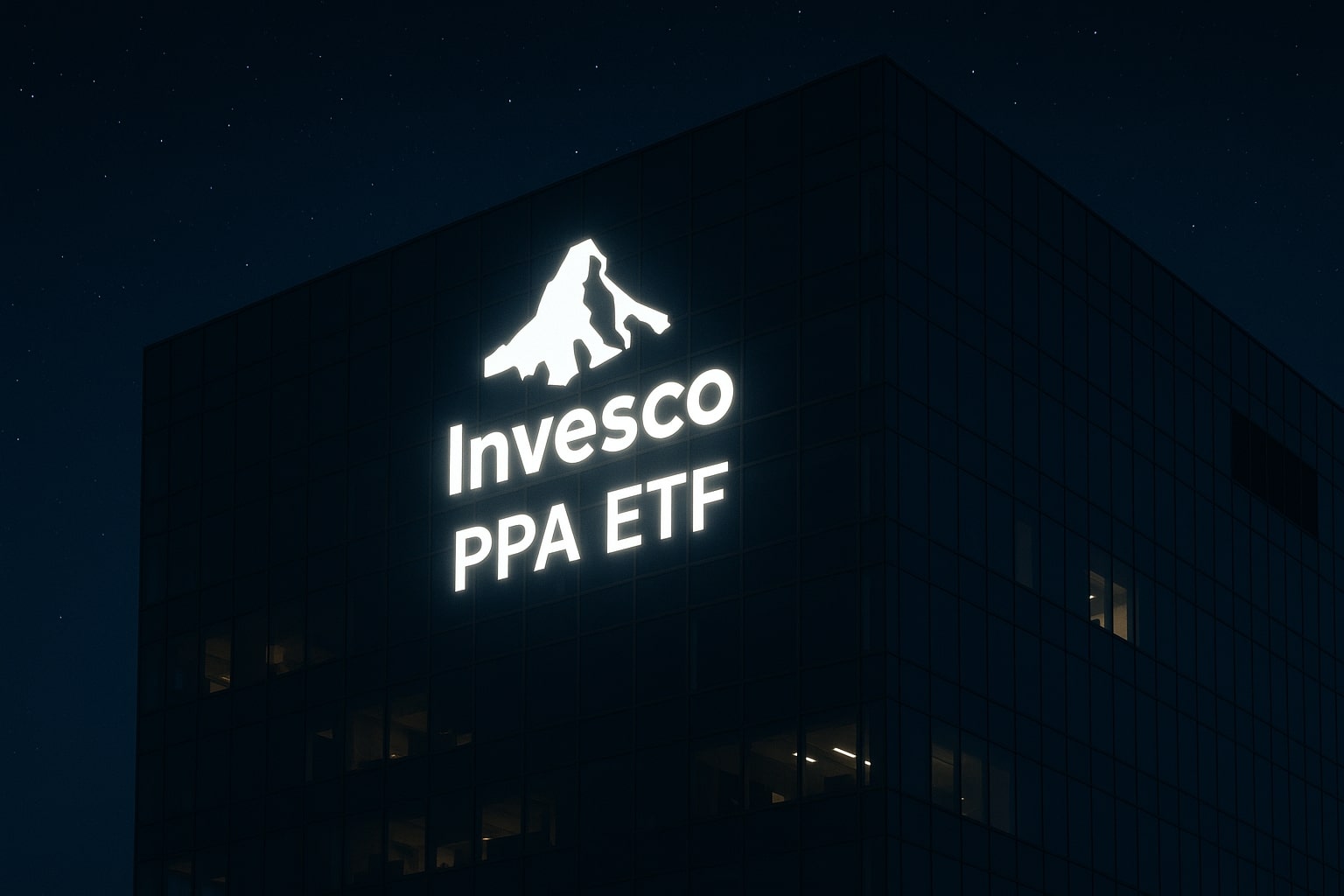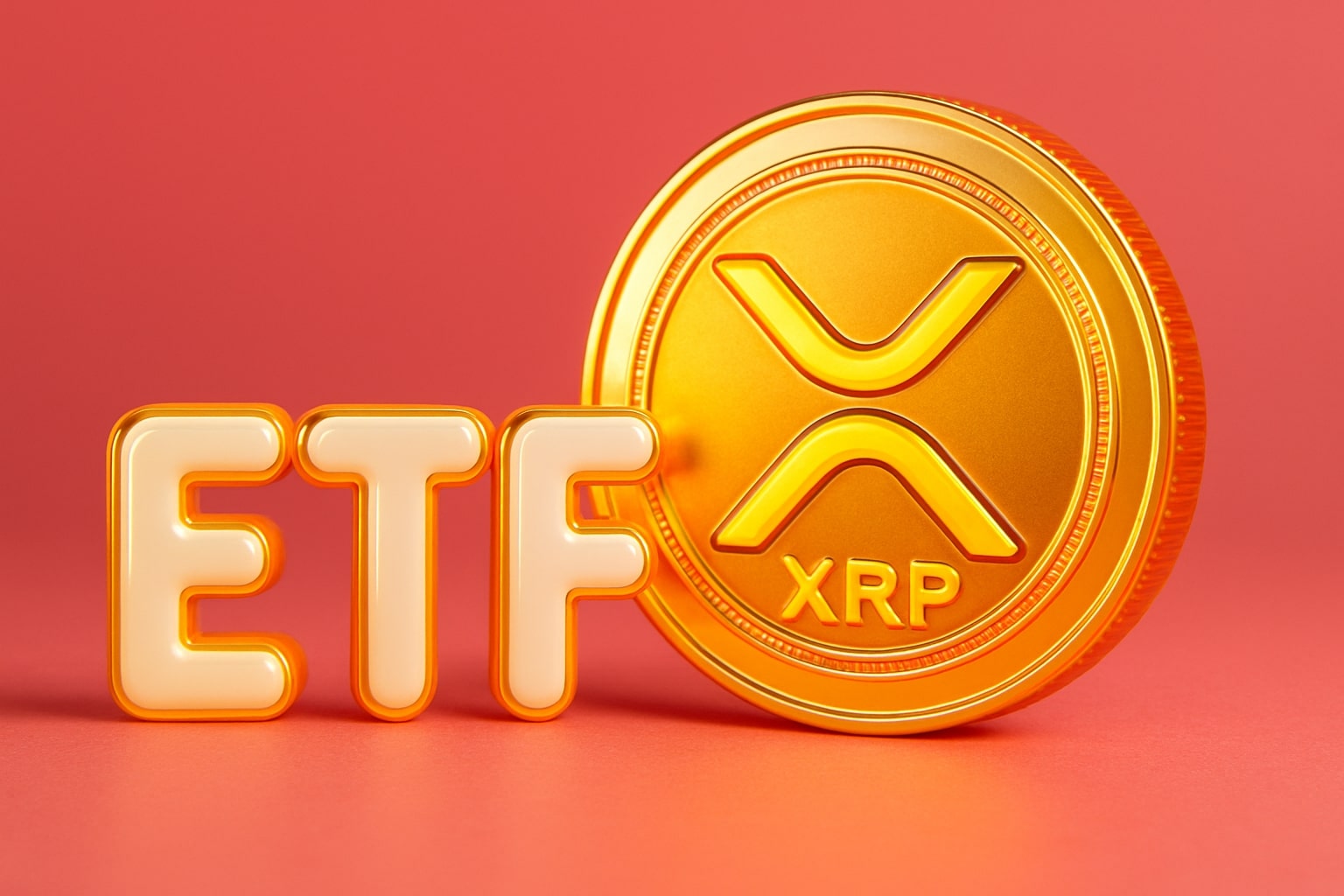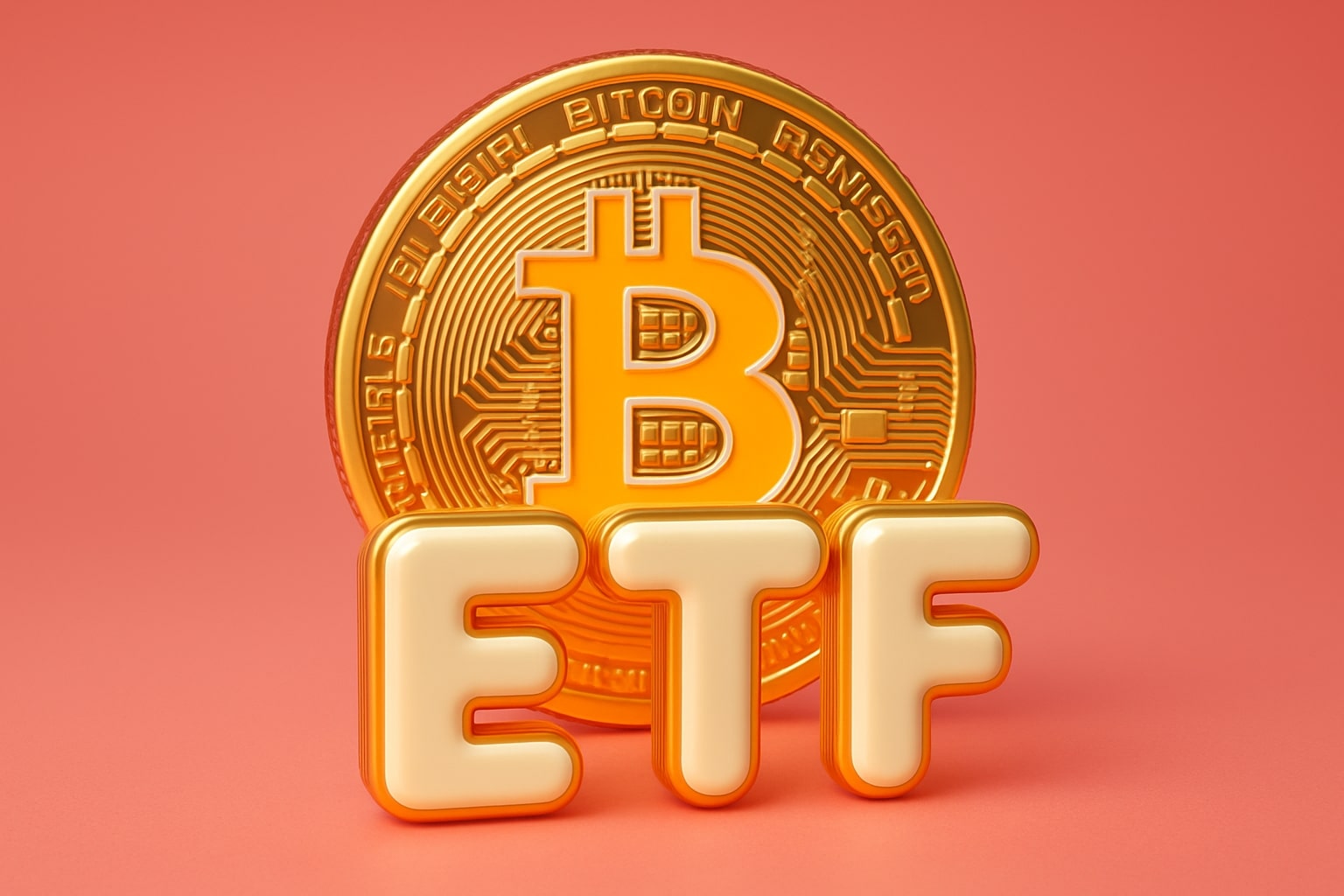
JEPQ ETF Analysis: NYSEARCA:JEPQ ETF at $55 With 11% Yield and Tech Exposure
JEPQ offers a high 11% yield by selling covered calls on megacaps, but capped upside raises questions for growth-focused investors | That's TradingNEWS
NYSEARCA:JEPQ ETF – Yield, Structure, and Market Position
The JPMorgan Nasdaq Equity Premium Income ETF (NYSEARCA:JEPQ) trades in the mid-$50s per share and continues to attract attention for combining double-digit yield with Nasdaq-100 exposure. Its payout, hovering around 11%, is generated by selling covered calls on some of the largest and fastest-growing tech stocks. Unlike passive counterparts, JEPQ is actively managed within JPMorgan’s equity-linked note framework, making it more flexible in balancing income with capital preservation.
Portfolio Composition and Growth Profile
JEPQ’s top holdings include NVIDIA (NVDA), Microsoft (MSFT), Apple (AAPL), Amazon (AMZN), Broadcom (AVGO), and Alphabet (GOOG). The average revenue growth across these companies is close to 28%, with EPS growth around 27%, but valuations are steep. NVDA trades at a P/E of 56 despite 86% revenue growth, Microsoft sits at 38x earnings with mid-teen growth, and Apple holds 32x earnings on only 6% top-line expansion. JEPQ is thus anchored in high-growth, richly valued equities, where income protection through call-writing plays a vital role.
Covered Call Strategy and Income
JEPQ writes one-month covered calls on Nasdaq-100 constituents using equity-linked notes, generating premium income that funds its monthly distributions. The 2025 yield remains steady at 10–12%. The trade-off is capped upside during rallies but more consistent income during flat or volatile markets. Higher implied volatility, especially during recent tariff-driven swings, boosted option premiums and allowed JEPQ to maintain payouts without NAV deterioration, reinforcing its reputation for income stability.
Comparing JEPQ with GPIQ and Other Competitors
Goldman Sachs’ GPIQ offers a more flexible overwrite ratio, ranging from 25% to 75%, while JEPQ typically stays more fully covered. As a result, GPIQ captured more upside in the Nasdaq rebound, while JEPQ’s return was flatter but more income-consistent. Expense ratios are aligned at 0.35% (GPIQ temporarily at 0.29%), though JEPQ’s equity-linked note structure leads to ordinary income taxation, while GPIQ’s index options benefit from Section 1256 tax treatment. Investors weighing JEPQ vs. GPIQ face a decision between upside participation and stable distributions.
Valuation of Underlying Holdings and Market Risks
The Nasdaq-100 trades near 42x earnings and 17x book value, highlighting stretched valuations. Amazon delivers 91% EPS growth but negative free cash flow trends, priced at 35x earnings. Broadcom grows revenue but faces declining EPS, still trading at 52x. Such valuations leave the index vulnerable to compression. JEPQ provides partial income hedge but does not eliminate downside risk in a sharp correction, making it less of a defensive vehicle than some investors assume.
Income Stability and Expense Structure
The ETF thrives on Nasdaq volatility, which keeps call premiums elevated. With distributions smoothed through reserves and consistent option selling, JEPQ offers visibility that retirees and income-driven investors prioritize. The 0.35% expense ratio is competitive, and liquidity is strong, with multi-billion-dollar AUM and tight bid-ask spreads. Investors can enter and exit positions efficiently without significant slippage.
The Decision: Buy, Sell, or Hold
At a price in the mid-$50s, NYSEARCA:JEPQ is best seen as a yield play, not a growth engine. Income investors seeking reliable double-digit distributions in sideways markets will find JEPQ a buy, especially in tax-advantaged accounts like IRAs. Growth-oriented investors, however, may prefer alternatives with less capped upside. Among covered-call ETFs, JEPQ remains one of the strongest due to JPMorgan’s active management, but the trade-off between capped rallies and income consistency must be clear.
That's TradingNEWS
Read More
-
PPA ETF at $154: Can This Defense ETF Keep Beating ITA and SPY?
14.12.2025 · TradingNEWS ArchiveStocks
-
XRP ETFs XRPI and XRPR Pull In $975M While XRP-USD Fights To Hold $2
14.12.2025 · TradingNEWS ArchiveCrypto
-
Natural Gas Price Forecast: NG=F Hits $4.11 As Warm Winter Outlook Puts $3.913 Support At Risk
14.12.2025 · TradingNEWS ArchiveCommodities
-
USD/JPY Price Forecast - Dollar to Yen Can BoJ’s 0.75% Shock Break The 155–158 Range?
14.12.2025 · TradingNEWS ArchiveForex


















